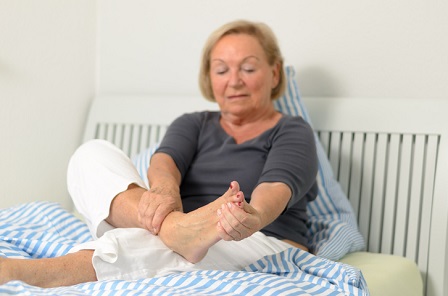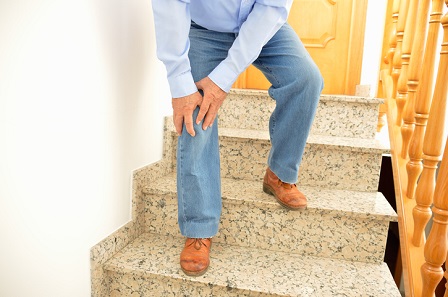It may seem strange to think of somebody going to a podiatry clinic, when they actually have a problem with their back.
After all, podiatry is the branch of medicine which diagnoses and treats issues related to the lower limbs – heels, toes, feet, ankles and knees.
And yet I see many patients complaining of leg or heel pain, for example, only to discover that their foot pain is caused by back problems, even though the back itself isn’t hurting!

Is Your Foot Pain Caused by Back Problems?
When I was in Cubs and Scouts years ago, we used to sing about how the knee bone’s connected to the thigh bone, the thigh bone’s connected to the hip bone, and so on.
We thought it was just a silly song, however in over twenty years of podiatry practice I have come to realise just how much truth it holds: the body is indeed a series of connective tissues, bones, nerves and systems, that all work in harmony with each other.
So when a patient is experiencing foot pain, it could in fact be something called “referred pain”. That is, although they may not have pain there, it is actually a back problem which is causing the symptoms in their feet, knees or legs.
Conversely, lower back pain may actually be related to poor biomechanics of the feet. In such cases, a podiatrist may be able to address the back pain, by prescribing certain shoes or orthotics that improve your overall body balance.
The Connection Between Feet and Back
The lumbar region at the base of the spine consists of five vertebrae, which play a really important role in how we use our lower limbs.
So when a client presents at our podiatry clinic with pain in both feet, we not only check for conditions such as spurs, ligament or tendon damage – but we also need to consider the body as a whole.
It is extremely rare for a patient to have an identical injury in the same location on both feet at the same time. Instead, we usually find that there are lower back issues, or other pathologies such as:
- thyroid disease;
- osteoarthritis;
- limb length discrepancies;
- scoliois (curvature of the spine).
These conditions can put pressure on the nerves, which then refer that pain to whatever they innovate. The lumbar region, for example, refers pain to your legs and feet.
A Whole of Body Approach
This is why a good podiatrist needs to assess your whole body, and not just your lower limbs.
Whatever we do to your lower limbs impacts on your hips, your back, and right up to your neck. When we treat foot pain, we don’t want it to cause an increase in lower back pain or headaches instead!
So in addition to looking at your foot type, the surface you stand on, your shoes and how they are wearing – your podiatrist should also check things like:
- Your body’s symmetry: are your legs the same length? Are your hips and buttocks level? Are your shoulders level or dropped to one side?
- The condition of various muscles: are they tight, or weak?
Because of the way the various parts of our body are connected and impact on each other, there are times when as a podiatrist I may refer a patient to other allied health care professionals.
At our Redlands podiatry clinic, we have a great working relationship with some of the local physiotherapists, chiropractors, osteopaths and the like, to ensure the best of care for the whole of your body in these particular situations.
The Problem with Growing Older

No body is perfect and we all have alignment imperfections. However as we grow older, our body’s ability to deal with these alignment anomalies starts to falter, so symptoms start to appear.
Patients often ask me: Why now? When I was younger I never had this problem!
And that is exactly my point – the body is no longer coping with or compensating for a certain twist in the back, a short leg, a bow in the bone, etc.
So next time you visit our podiatry clinic, don’t be surprised if as well as considering your fallen arches, or sore achilles tendon, we also assess your whole body alignment.
At our Redlands podiatry clinic, we treat each patient as a whole person, rather than just a foot! Call today on 3207 4736 for an appointment, if you are experiencing foot or leg pain.
